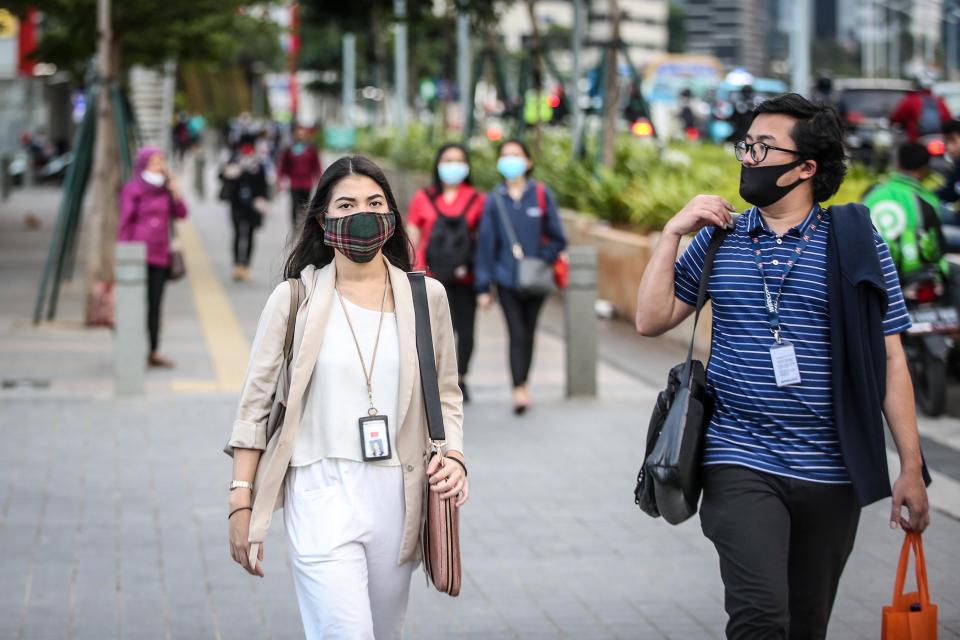Coronavirus: What is the K number?
As officials gradually ease lockdown, they often stress how the all important R number must be kept below 1.
The R, or basic reproduction number, is an estimate of the number of people a patient statistically goes on to infect.
By keeping the R below 1 via social distancing, hand washing and face coverings, the outbreak should start to peter out.
The R number may be a bit simplistic, however. Frontline workers without symptoms may unwittingly infect many patients, while a vulnerable self-shielder could keep the virus to themselves.
This is where the K number comes in.

What is the K number?
The K number measures the difference in how many people patients infect.
A low K number means most infected people are not passing the coronavirus on, with “super spreaders” being responsible.
This is thought to be the case with the ongoing pandemic, with evidence suggesting just 10% to 15% of patients are behind around 80% of the total number of infections.
Dr Adam Kucharski from the London School of Hygiene and Tropical Medicine (LSHTM) told the BBC: “Typically, what happens is a lot of people don't give the infection to anyone.
“Then there's a handful of events where you see large amounts of transmission happening with five, 10, 20 people potentially infected”.
Dr Rosalind Eggo, also from the LSHTM, told Sky News the coronavirus’s K number is around 0.16, “which is a ‘low’ value and means a lot of variation between people.
“But for flu, it is maybe around 2, in that there is some but not a huge amount of difference in the number of infections by each person.”
In other words, the smaller the K number, the more that infections come from just a few individuals.
If it is between 5 or 10, most patients are infecting a similar number of people. Once K is below 1, super spreading becomes a risk.
What influences the K number?
The infectiousness of an individual is thought to depend on their “viral load” or “dose” of infection.
Those exposed to a large quantity of viral particles, like frontline workers with insufficient personal protective equipment, will likely have a higher viral load.
How long they have been infected for also plays a role. Most individuals are thought to clear the virus within 14 days, but this varies from person to person.
The severity of symptoms also affects the K number.
Asymptomatic patients can pass the coronavirus on, but if an individual is not sneezing or coughing as a result of the infection, the rate of transmission is expected to be less.
Patient behaviour may be most important of all.
“If someone, when they're most transmissible, happens to go to an all-day meeting with a large number of people, and then go out for dinner afterwards, you may well see a super spreading event,” said Dr Kucharski.
Super spreading events have largely been seen in confined spaces with vulnerable people, like hospitals and care homes, as well as on cruise ships.
Infection clusters have also been linked to choir practices and gyms.
It has been suggested that loud venues, or places where you work up a sweat, cause a person to speak more forcefully or breathe heavily. This may contribute to virus transmission.
Why is the K number important?
The K number highlights the risk of super spreaders.
This could help in the easing of lockdown by indicating the need to stop super-spreading events, like public gatherings, even while other restrictions can be safely lifted.
Understanding the K number may also assist the NHS’s test, trace and isolate system.
This involves members of the public being asked to isolate entirely for 14 days if they are told they came into contact with a coronavirus patient.
If super spreaders are behind most cases, clusters of exposure may be easier to spot.

What is the coronavirus?
The coronavirus is one of seven strains of a virus class that are known to infect humans.
Others cause everything from the common cold to severe acute respiratory syndrome (Sars), which killed 774 people during its 2002/3 outbreak.
Since the coronavirus outbreak was identified at the end of 2019, more than 7 million cases have been confirmed worldwide, according to Johns Hopkins University.
Of these cases, over 3.1 million are known to have recovered.
Globally, the death toll has exceeded 402,800.
The coronavirus mainly spreads face to face via infected droplets expelled in a cough or sneeze.
There is also evidence it can spread in faeces and survive on surfaces.
Symptoms include fever, cough and a loss of taste or smell.
The coronavirus has no “set” treatment, with most patients naturally fighting off the infection.
Those requiring hospitalisation are given “supportive care”, like ventilation, while their immune system gets to work.
Officials urge people ward off infection by washing their hands regularly and maintaining social distancing.
Coronavirus: what happened today
Click here to sign up to the latest news, advice and information with our daily Catch-up newsletter
Read more about COVID-19
How to get a coronavirus test if you have symptoms
How easing of lockdown rules affects you
In pictures: How UK school classrooms could look in new normal
How public transport could look after lockdown
How our public spaces will change in the future
Help and advice
Read the full list of official FAQs here
10 tips from the NHS to help deal with anxiety
What to do if you think you have symptoms
How to get help if you've been furloughed



